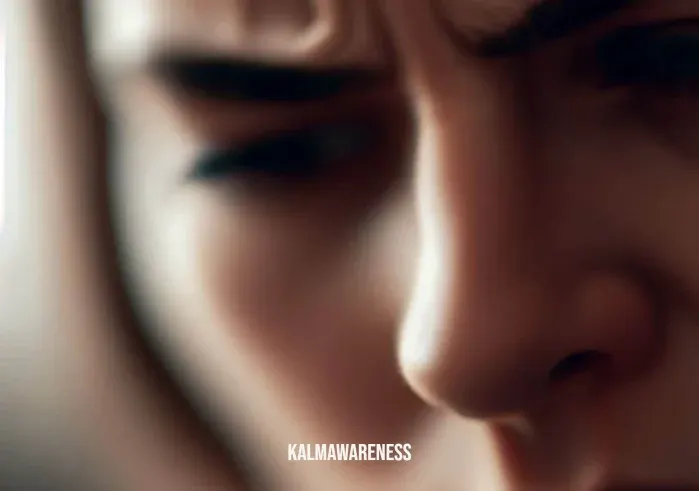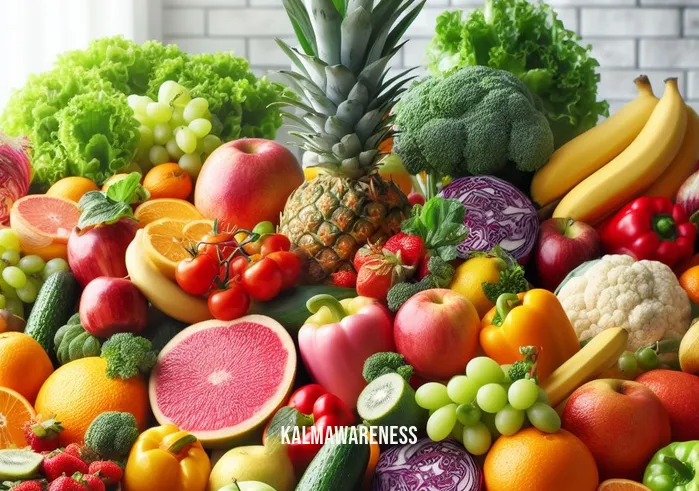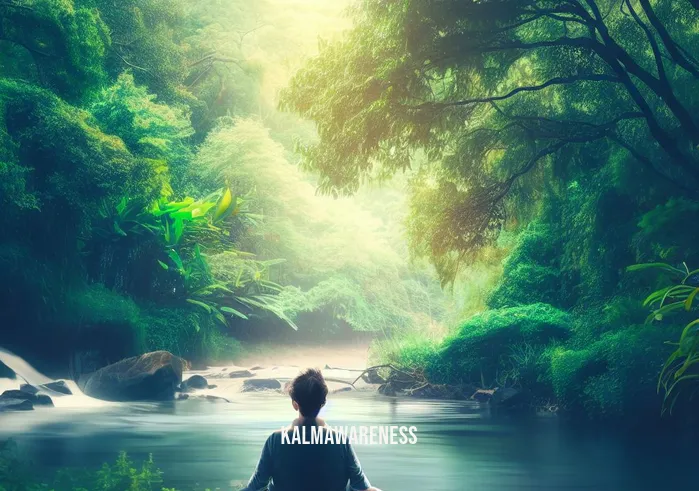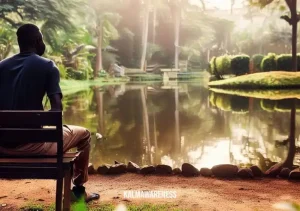Is Curiosity an Emotion? Let’s Uncover the Intriguing Mystery
Curiosity, a staple in the vast tapestry of human emotions, oftentimes provokes us to ponder: “Is curiosity an emotion?” It’s a complex question, intimately entwined with our cognitive processes, behaviors, and experiences.
Emotions, Curiosity, and Our Minds: An Intimate Relationship
When we look at the fascinating panorama of our emotional landscape, we find it to be brimming with a spectrum of sentiments – happiness, sadness, anger, and fear, to name a few. But where does curiosity fit into this picture? For starters, we know it plays an integral role in our exploration ventures and influences our tendency to wander, whether aimlessly or with purpose.
Contrary to traditional perspectives that categorize emotions into neatly defined slots, contemporary psychology and neuroscience suggest that emotions aren’t simply reactive states but actively shape our cognitive processes. So, curiosity isn’t a passive phenomenon, waiting to be triggered by the external world. Instead, it’s an active participant in the way we interact with our surroundings.
Consider this. When our curiosity is piqued, we are more likely to engage in activities that satiate this intellectual hunger, be it mindful exploration or immersing ourselves in books and documentaries. We’re prompted to ask questions and seek answers.
Curiosity: The Intersection of Emotion and Cognition
Arguably, curiosity straddles the line between emotion and cognition. On one hand, it’s akin to emotions in its capacity to inspire action. On the other hand, it’s like cognitive processes because it drives learning and understanding. In a way, curiosity is a mental itch that we desperately want to scratch. This intersection is what makes curiosity a vital part of our personal growth journey.
“Curiosity is the wick in the candle of learning.” – William Arthur Ward
Curiosity: A Driving Force of Human Behavior
Let’s take a closer look at how curiosity influences our behavior. Think about the last time you found yourself engrossed in a mindfulness book or caught up in a thought-provoking TED Talk. It was curiosity that nudged you towards these pursuits, wasn’t it?
Moreover, curiosity promotes adaptive behaviors. When confronted with new experiences or environments, curiosity motivates us to engage and interact, aiding in learning and adaptation. Whether we’re navigating through gloomy consciousness or figuring out our imperfect love meanings, curiosity is our constant companion, guiding us through uncharted emotional territories.
Curiosity, with its multi-faceted nature, adds a dash of color to our emotional kaleidoscope. While we’re just scratching the surface of this complex phenomenon, we’ve set the stage for a deeper exploration of curiosity as an emotion. As we delve further, we’ll delve into the neuroscience of curiosity, how it affects our brain, and its role in our personal growth.
Please continue to the next part of the article to explore more about curiosity and its connection to our emotions. Get ready to discover its neuroscience and how it affects personal development!

The Neuroscience of Curiosity: Peering into the Human Brain
Embarking on the journey to answer the question “is curiosity an emotion?”, our expedition leads us into the realm of neuroscience. The link between curiosity and the brain is incredibly nuanced and fascinating.
The Brain’s Curiosity Center
Curiosity engages several areas of the brain. Predominantly, the dopamine reward system, which includes regions like the substantia nigra/ventral tegmental area (SN/VTA) and the nucleus accumbens, plays a pivotal role.
- Substantia Nigra/Ventral Tegmental Area (SN/VTA): This region is responsible for the production of dopamine, a neurotransmitter related to pleasure and reward. When curiosity is piqued, the SN/VTA is activated, releasing dopamine.
- Nucleus Accumbens: Often referred to as the brain’s ‘pleasure center’, the nucleus accumbens is activated when we experience rewarding situations, including when we successfully satisfy our curiosity.
Let’s take a more detailed look at these regions with the help of a hand-brain model.
Curiosity and Dopamine: A Powerful Duo
The brain’s dopamine reward system is critical in understanding curiosity. When we’re curious, our brain anticipates the rewarding feeling of learning new information, thus releasing dopamine. This phenomenon, coupled with the fact that dopamine also aids in the process of memory and learning, explains why we remember more when we learn out of curiosity.
How Curiosity Influences Behavior: A Table of Insights
| Curiosity Aspect | Behavioral Influence | Internal Link |
|---|---|---|
| Knowledge Acquisition | Drives us to learn new things | Exploring Minds |
| Problem Solving | Prompts innovative and creative solutions | Personal Growth |
| Empathy | Encourages understanding of different perspectives | Labeling Thoughts |
Curiosity as a Catalyst for Personal Growth
As we’ve seen, curiosity plays a crucial role in our emotional and cognitive processing. But its effects aren’t limited to the realm of the mind – it also significantly impacts our journey towards personal growth. Curiosity sparks the desire to learn, propelling us forward in areas of self-improvement, skill acquisition, and knowledge expansion.
Furthermore, curiosity teaches us to approach life with an open mind – it encourages a non-judgmental perspective and the ability to stay present. This practice of non-identification with our thoughts and emotions allows us to explore our internal and external environment without the burden of prejudice or preconceived notions. Curiosity, therefore, is a key player in fostering mindfulness and emotional maturity.
In the grand scheme of emotions, curiosity carves out a unique space for itself. It is a testament to the complex and intricate design of the human brain and the rich emotional tapestry it weaves. As we journey further into the depths of curiosity, we find ourselves at the intersection of cognitive, emotional, and behavioral domains.
Stay tuned for the next part of the article where we will explore the connection between curiosity and well-being, and the ways to cultivate this powerful emotion.

Fostering Well-Being through Curiosity: An Emotional Booster
To truly delve into our central question, “is curious an emotion?”, we must look at the significant impact curiosity has on our well-being. Countless philosophers, psychologists, and scientists have pointed out the importance of curiosity in our lives, and their wisdom provides us with valuable insight.
The Beneficial Role of Curiosity
Curiosity, as an emotion, serves as a catalyst for positive change, encouraging us to explore and learn, thereby promoting our mental, emotional, and social well-being. Let’s consider this profound quote from the renowned physicist Albert Einstein:
“I have no special talent. I am only passionately curious.”
Einstein’s words perfectly encapsulate the inherent value of curiosity in driving growth and discovery. Indeed, curiosity led him to monumental scientific breakthroughs. In the same vein, nurturing our innate curiosity can open doors to a wealth of experiences that enrich our lives and help us flourish.
Curiosity and Resilience
Curiosity also fosters resilience. The ability to bounce back from adversity is a crucial aspect of well-being. When we approach challenges with a curious mindset, we are more likely to see them as opportunities to learn and grow, rather than as insurmountable obstacles. In the words of Walt Disney:
“We keep moving forward, opening new doors, and doing new things, because we’re curious and curiosity keeps leading us down new paths.”
This view of curiosity as a driving force toward resilience and positive exploration resonates deeply with our approach to personal growth and mindfulness.
Curiosity in Social Connections
Curiosity enhances our social connections, playing a crucial role in forming and maintaining meaningful relationships. By being genuinely interested in understanding others, we build deeper connections and promote mutual understanding. Novelist Leo Tolstoy noted:
“The two most powerful warriors are patience and time… so remember: great achievements take time, there is no overnight success.”
This powerful statement can also be applied to our social relationships. Just like great achievements, forming meaningful relationships takes time and patience, and curiosity is a key player in this process.
Curiosity: The Fuel for Mindful Living
Incorporating curiosity into our daily lives can significantly enhance our mindfulness practice. By approaching each moment with a sense of wonder and intrigue, we foster a deeper awareness of the present moment, a crucial aspect of mindful living. As psychologist and mindfulness expert Jon Kabat-Zinn asserts:
“Mindfulness is the aware, balanced acceptance of the present experience… It isn’t more complicated than that. It is opening to or receiving the present moment, pleasant or unpleasant, just as it is, without either clinging to it or rejecting it.”
Cultivating curiosity allows us to embody this openness and acceptance Kabat-Zinn speaks of, further enhancing our mindfulness practice.
Our investigation into “is curious an emotion?” reveals the powerful role curiosity plays in promoting well-being. From enhancing resilience to fostering mindfulness, the benefits of curiosity are manifold, thus underscoring its importance as a unique emotional experience.
In the next chapter, we’ll explore practical techniques for cultivating curiosity, and how we can use it as a tool for self-discovery. Join us as we continue our exploration into this fascinating emotion!

Cultivating Curiosity: A Path to Self-Discovery
Delving deeper into our central question, “is curious an emotion?”, we’ve discovered the transformative power of curiosity in our lives. We’re now poised to discuss how we can consciously cultivate curiosity and utilize it as a tool for self-discovery.
Techniques for Fostering Curiosity
One of the most effective ways to nurture our innate curiosity is by incorporating certain practices into our daily routine. Techniques such as mindfulness, exploration, asking questions, and seeking novelty can significantly amplify our natural curiosity. By practicing these techniques, we can dive deeper into our understanding and eventually address our primary question: is curious an emotion?
Mindfulness
As we’ve discussed earlier, mindfulness and curiosity go hand in hand. Practicing mindfulness fosters a keen awareness of the present moment, which inherently cultivates a sense of curiosity about our thoughts, emotions, and surroundings. As Thich Nhat Hanh, the Zen master and mindfulness practitioner, beautifully puts it:
“The present moment is filled with joy and happiness. If you are attentive, you will see it.”
By practicing mindfulness exercises, like those in our Mindfulness Impact Factor, we encourage a curious attitude towards our present experience.
Exploration
Exploring new environments and experiences can significantly boost our curiosity. Whether it’s taking a new route to work, trying a new hobby, or delving into a new book or subject matter, exploration is a catalyst for curiosity. American author Mark Twain emphasizes this concept in his quote:
“Travel is fatal to prejudice, bigotry, and narrow-mindedness, and many of our people need it sorely on these accounts.”
Similarly, we can start our own quick exploration venture to foster curiosity and broaden our perspectives.
Asking Questions
Curiosity is fueled by asking questions. Developing a habit of inquiring and seeking answers not only enriches our knowledge but also strengthens our curious mindset. American journalist and author Diane Sawyer captures this idea well when she says:
“Whatever you want in life, other people are going to want it too. Believe in yourself enough to accept the idea that you have an equal right to it.”
We can ask more questions about mindfulness and other topics that ignite our interest, promoting a curious and inquisitive mindset.
Seeking Novelty
Regularly seeking out new and unfamiliar experiences is another effective way to fuel curiosity. Whether it’s trying a new cuisine, learning a new language, or experimenting with a new form of exercise, novelty sparks curiosity. American actress Mary Tyler Moore beautifully encapsulates this idea in her quote:
“Take chances, make mistakes. That’s how you grow.”
We can embark on new experiences, for instance, exploring the unknown realms of our inner child healing exercises, to trigger our curiosity.

Cultivating Curiosity: A Path to Self-Discovery
Delving deeper into our central question, “is curious an emotion?”, we’ve discovered the transformative power of curiosity in our lives. We’re now poised to discuss how we can consciously cultivate curiosity and utilize it as a tool for self-discovery.
Techniques for Fostering Curiosity
One of the most effective ways to nurture our innate curiosity is by incorporating certain practices into our daily routine. Techniques such as mindfulness, exploration, asking questions, and seeking novelty can significantly amplify our natural curiosity. By practicing these techniques, we can dive deeper into our understanding and eventually address our primary question: is curious an emotion?
Mindfulness
As we’ve discussed earlier, mindfulness and curiosity go hand in hand. Practicing mindfulness fosters a keen awareness of the present moment, which inherently cultivates a sense of curiosity about our thoughts, emotions, and surroundings. As Thich Nhat Hanh, the Zen master and mindfulness practitioner, beautifully puts it:
“The present moment is filled with joy and happiness. If you are attentive, you will see it.”
By practicing mindfulness exercises, like those in our Mindfulness Impact Factor, we encourage a curious attitude towards our present experience.
Exploration
Exploring new environments and experiences can significantly boost our curiosity. Whether it’s taking a new route to work, trying a new hobby, or delving into a new book or subject matter, exploration is a catalyst for curiosity. American author Mark Twain emphasizes this concept in his quote:
“Travel is fatal to prejudice, bigotry, and narrow-mindedness, and many of our people need it sorely on these accounts.”
Similarly, we can start our own quick exploration venture to foster curiosity and broaden our perspectives.
Asking Questions
Curiosity is fueled by asking questions. Developing a habit of inquiring and seeking answers not only enriches our knowledge but also strengthens our curious mindset. American journalist and author Diane Sawyer captures this idea well when she says:
“Whatever you want in life, other people are going to want it too. Believe in yourself enough to accept the idea that you have an equal right to it.”
We can ask more questions about mindfulness and other topics that ignite our interest, promoting a curious and inquisitive mindset.
Seeking Novelty
Regularly seeking out new and unfamiliar experiences is another effective way to fuel curiosity. Whether it’s trying a new cuisine, learning a new language, or experimenting with a new form of exercise, novelty sparks curiosity. American actress Mary Tyler Moore beautifully encapsulates this idea in her quote:
“Take chances, make mistakes. That’s how you grow.”
We can embark on new experiences, for instance, exploring the unknown realms of our inner child healing exercises, to trigger our curiosity.
With these strategies in mind, it becomes clearer that curiosity can indeed be regarded as a distinct emotion. Its potential for promoting personal growth and fostering resilience underscores its crucial role in our lives.
In the final chapter, we’ll answer the lingering question: ‘is curious an emotion?’ and conclude our insightful journey into the world of curiosity. Stay tuned for the final revelations!

Conclusion: The Emotional Resonance of Curiosity
As we move towards the conclusion of our exploration, it’s time to tackle our main question head-on: is curious an emotion? After careful consideration and deep exploration, we arrive at an informed perspective.
Emotions and Curiosity
Before we can definitively answer our central question, we must first understand what constitutes an emotion. Emotions are complex, involving different components like feelings, physiological responses, and expressions. Yet, curiosity, with its distinct behavioral and physiological patterns, can indeed be considered an emotion.
Through various personal experiences, we recognize that curiosity, like any other emotion, generates a distinct sensation. When we encounter a challenging problem or a fascinating mystery, our heartbeat may accelerate, our pupils might dilate, and an irresistible urge to seek answers sets in. These responses mirror the manifestations of conventional emotions, bolstering the notion that curiosity is an emotion.
Curiosity and Personal Growth
Just as George Mumford, a mindfulness and performance expert, suggests that a “mindful athlete” finds their optimal performance by being fully present, we can apply the same principles to our curiosity.
Being curious invites us to be fully present, to lean into the unknown, and to learn from every situation. It not only enriches our knowledge but also empowers us with a sense of purpose, ultimately aiding our personal growth.
Curiosity as an Integral Emotional Experience
Throughout our exploration, we have repeatedly come across evidence that curiosity shapes our lives profoundly. It guides us towards novel experiences, encourages us to ask insightful questions, and compels us to explore the depth and breadth of our world. As poet Mary Oliver wisely expressed:
“Instructions for living a life. Pay attention. Be astonished. Tell about it.”
These are not just actions, but emotional responses, triggering our innate need for understanding. This interplay of curiosity and emotion manifests itself vividly when we explore minds or when we indulge in inner child healing exercises, embodying the emotional essence of curiosity.
So, to finally answer our question, yes, curiosity is indeed an emotion. It involves feelings, triggers physiological responses, and prompts us to act – all hallmarks of emotional experiences.
By embracing curiosity, we open ourselves up to a world of possibilities, inviting personal growth, wisdom, and happiness into our lives. As we’ve learned throughout this journey, curiosity is not just an emotion; it’s an empowering state of being that can profoundly enrich our lives.
Thank you for joining us on this exploration of curiosity. Remember, the journey doesn’t end here. As long as you’re curious, there’s always more to discover!
Continue to cultivate your curiosity by exploring other fascinating topics on Kalm Awareness. The journey of learning never truly ends, it just takes different paths. Keep exploring, keep growing





